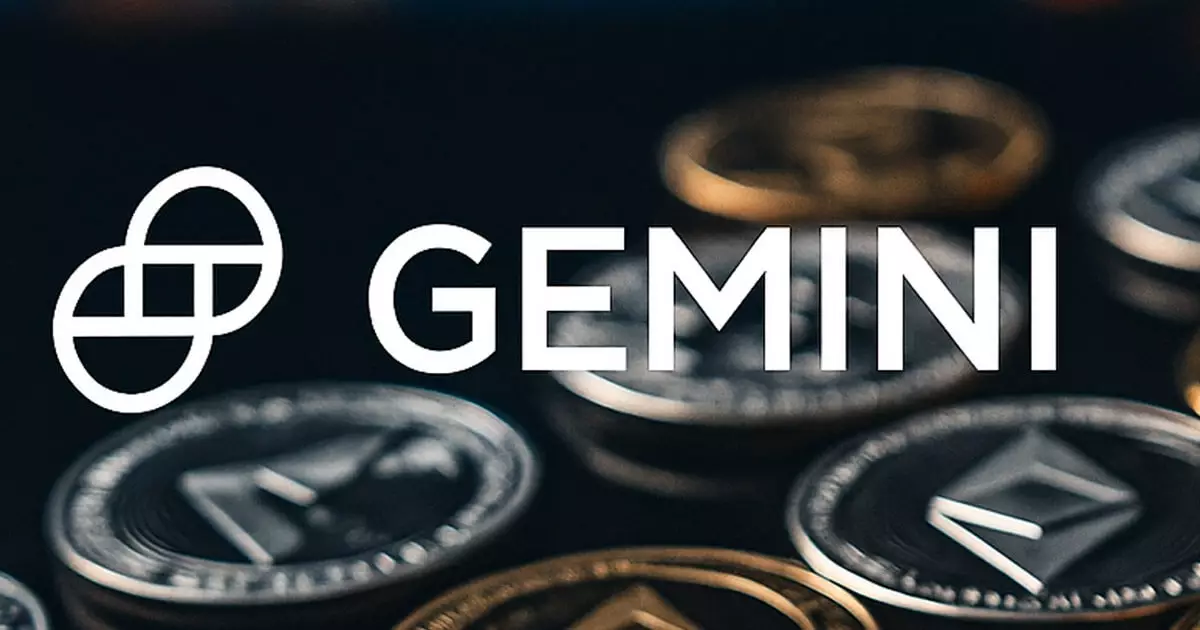Gemini’s plan to go public signals a momentous shift in the cryptocurrency landscape. Backed by the influential Nasdaq, Gemini aims to secure its place among the elite exchanges, elevating digital assets from niche innovation to mainstream financial institutions. The strategic partnership not only offers a substantial capital infusion—potentially up to $317 million—but also marks a calculated effort to bridge traditional Wall Street legitimacy with the burgeoning crypto economy. By engaging Nasdaq as an investor and partner, Gemini is articulating a clear message: cryptocurrencies are no longer fringe assets but integral components of the modern financial ecosystem. This bold move could accelerate institutional acceptance but also exposes Gemini to the scrutiny and volatility typical of both crypto and traditional markets.
Strategic Alliances or Faustian Bargain?
The partnership with Nasdaq underscores a deeper, more complex dynamic. While attracting institutional clients with advanced custody and staking solutions appears advantageous, it raises questions about independence and influence. Nasdaq’s investment, especially paired with access to Gemini’s custody and staking products, reflects an overt attempt to corner institutional markets that remain skeptical of crypto’s reliability. For Gemini, aligning with a renowned financial powerhouse offers credibility but risks diluting its innovative edge under the weight of traditional finance expectations. Moreover, the shared technology platform—Calypso—symbolizes an integration that could either streamline services or entrench siloed control, potentially stifling the very innovation that crypto advocates initially championed.
The Risks and Rewards of an Uncertain Market
Financially, Gemini’s recent disclosures highlight the perilous nature of the digital asset industry. Massive operational losses, despite billions in trading volume and billions in client assets, illustrate that profitability remains elusive. Its first-half losses underscore the brutal competition, regulatory turbulence, and market volatility that a newly public exchange must navigate. While Wall Street’s interest in such offerings signals optimism, it only confirms that the road ahead is fraught with risks. The crypto sector’s history of boom-bust cycles suggests that even a successful IPO might serve as a stepping stone rather than a paragon of stability. For an organization like Gemini, whose founders are passionate Bitcoin investors, this move could be both the pinnacle of their ambitions and the beginning of new vulnerabilities.
Implications for the Future of Crypto Regulation and Adoption
Viewed through a center-right lens, Gemini’s IPO and Nasdaq partnership represent a pragmatic approach to integrating digital currencies within the broader financial framework. It underscores the importance of structured regulation and consumer protections that can foster sustainable growth. However, it also illuminates the ongoing tension between regulation and innovation—balancing investor confidence with the need for flexibility in a rapidly evolving industry. Gemini’s trajectory indicates that digital assets are gradually becoming less rebellious but more systematically embedded in the traditional finance infrastructure. The stakes are high: if successful, this move could pave the way for more cautious, institutionalized participation, but it risks becoming entangled in bureaucratic oversight that might hamper true innovation or favor established interests over retail investors.
In the end, Gemini’s ambitious move embodies both the promise and peril of the crypto age’s next chapter. If it succeeds, it could redefine legitimacy and trust in digital finance—yet, failure to navigate the turbulent waters of regulation, market volatility, and technological integration could lead to a prominent fall from the heights it seeks to reach.

